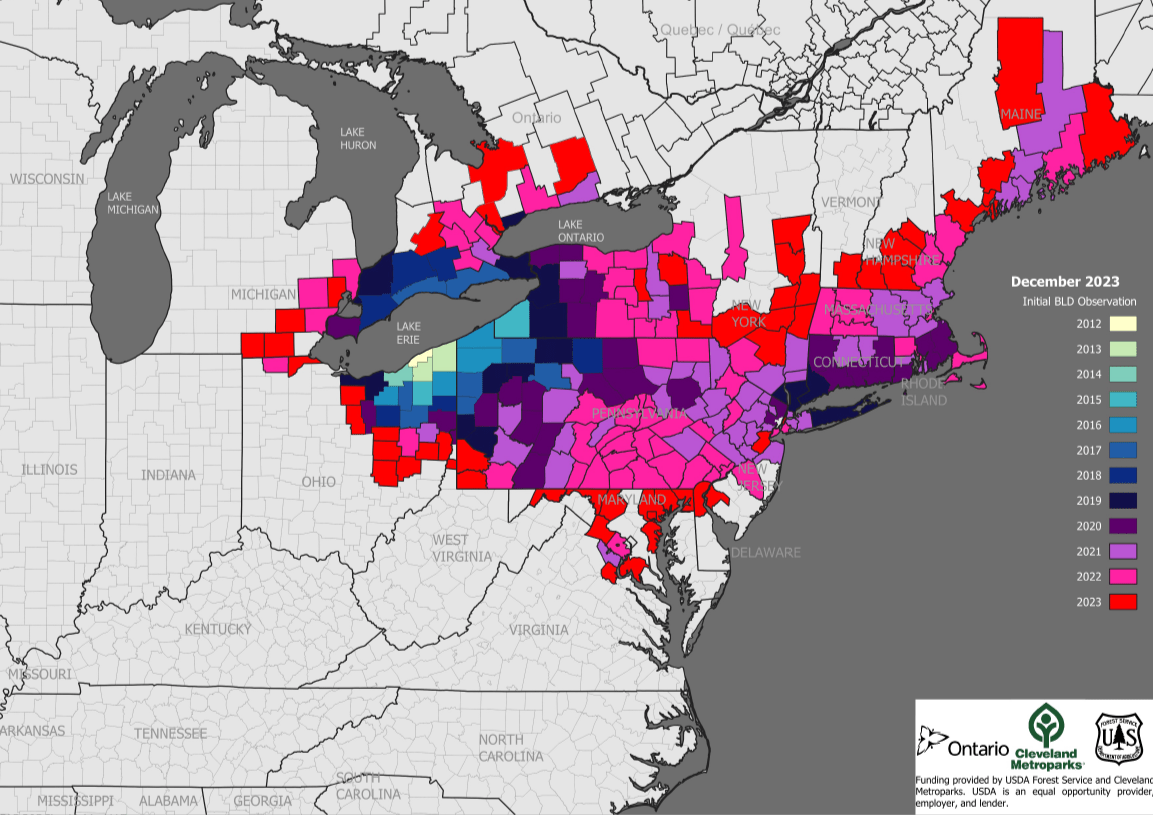Key points about Beech Leaf Disease
- Beech leaf disease (BLD) causes significant dieback, decline, and death of beech trees. BLD was first detected in the Cleveland, Ohio area in 2012. Since then, it has been detected in other Ohio counties, Connecticut, Massachusetts, New Jersey, New York, Pennsylvania, Rhode Island, West Virginia, Virginia, and the Canadian Province of Ontario. The Maryland Department of Agriculture confirmed the presence of beech leaf disease in Maryland in September 2023. It is now in at least 8 Maryland counties: Alleghany, Anne Arundel, Baltimore, Cecil, Charles, Frederick, Harford, and Washington.
- The disease is caused by an invasive foliar-feeding nematode (a microscopic worm), Litylenchus crenatae subsp. mccannii. The nematode overwinters in leaf buds and enters leaves as they develop in the spring. Scientists are trying to find out how the nematodes spread and how they can be managed to protect tree health.
- All beech species, including native American beech (Fagus grandifolia), European beech (Fagus sylvatica), and Oriental beech (Fagus orientalis) are susceptible to the disease. American beech, native to eastern North America, is a beautiful and important forest tree known for its smooth bark. Beeches are also planted as ornamental trees in the landscape.


Symptoms of Beech Leaf Disease
- Dark stripes or bands between the veins of leaves are a distinct, early symptom of BLD infection. They are visible immediately upon bud break in the spring.
- The bands are best seen by looking at the leaves from below and allowing sunlight to pass through the leaf tissue.
- Thickening and leaf distortion can also be observed.
- Infected leaves may be unevenly distributed in the lower canopy of a tree.
- Thinning of the leaf canopy happens over time due to early leaf drop and aborted leaf bud development. This stresses and weakens trees, causing them to die.
